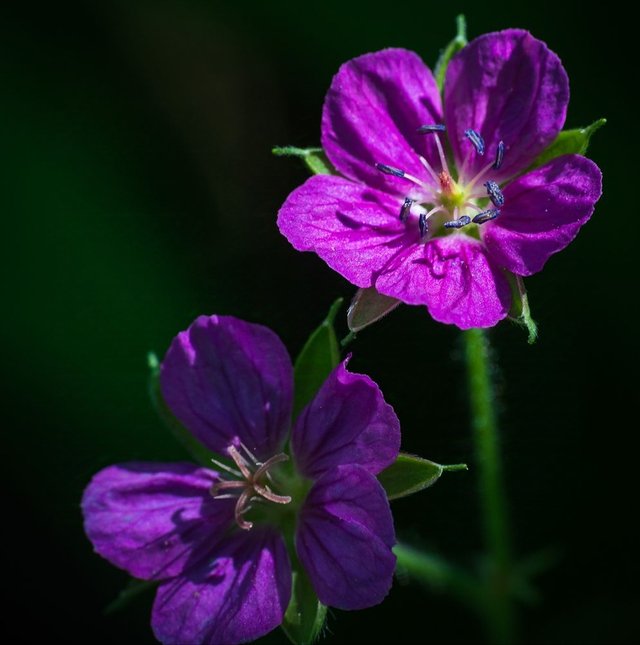Wood Crane's-Bill So Beautiful
A Detailed Look at Wood Crane's-Bill
The Wood Crane's-Bill, Geranium sylvaticum, is a perennial flowering plant that belongs to the Geraniaceae family. Known for its delicate charm and ecological importance, this plant is native to Europe and parts of Asia, where it thrives in temperate climates. Its striking purple-blue flowers and adaptability to various environments make it a favorite among gardeners, ecologists, and plant enthusiasts alike.
Botanical Description
Wood Crane's-Bill is a herbaceous perennial that typically grows between 30 and 60 centimeters tall. Its stems are erect and covered with fine hairs, adding to the plant's subtle beauty. The deeply lobed, palmate leaves are a vibrant green, creating an attractive foliage backdrop for the flowers.
The flowers, which bloom from late spring to mid-summer, are perhaps the plant's most captivating feature. Measuring about 2-3 centimeters in diameter, the flowers are typically a vivid violet-blue, though variations in color, such as pink and white, also occur. Each flower consists of five petals, often adorned with darker veins that act as guides for pollinators.
Natural Habitat and Distribution
Wood Crane's-Bill is commonly found in meadows, woodland edges, and grasslands. It thrives in moist, well-drained soils and prefers partial to full sunlight. Native to Europe and parts of northern Asia, the plant has been introduced to other regions, including North America, where it is appreciated for its ornamental value and role in supporting local ecosystems.
In the wild, this plant often grows in areas with moderate to high rainfall, making it a reliable indicator of fertile and undisturbed soils. It is particularly common in mountainous and forested regions, where it adds a splash of color to the understory.
Ecological Significance
One of the most important aspects of Wood Crane's-Bill is its contribution to local ecosystems. The plant is a vital source of nectar and pollen for a variety of pollinators, including bees, butterflies, and hoverflies. Its long flowering period ensures that these insects have access to nourishment during the critical months of spring and early summer.




